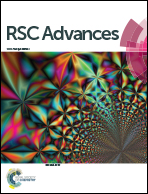Coupling FtsZ filaments and morphodynamics during bacterial cell division
Abstract
FtsZ filaments play a central role in bacterial cell division. A theoretical framework is developed by combining a phase field model for rod-shaped cells with a kinetic description for FtsZ ring maintenance, in order to investigate cell morphodynamics during bacterial cell division. The cell division time and cell shape are collectively determined by the curvature elastic energy of the cell membrane/wall and the constriction force generated by FtsZ rings. The dependence of cell morphodynamics during cell division on different initial states of rod-shaped cells and FtsZ rings, such as the aspect ratio and the FtsZ concentration in cells, ZT, is extensively studied. The obtained results with the measured experimental parameters are found to be well comparable to the observed results physiologically. Likewise, it is found that the quasi-steady state of FtsZ rings accords with the theoretical result derived from the kinetic description of FtsZ rings. In addition, the morphological phase diagram is presented as a function of the FtsZ concentration in cells, ZT, and the aspect ratio of rod-shaped cells, given that rod-shaped cells with high ZTs and/or aspect ratios tend to divide. It will be straightforward to extend the theoretical framework to other complicated systems relevant to filamentous proteins and cells, for example, maintaining structural integrity, serving as a template for cell growth, cell adhesion and motility, and mechanical signal transduction.


 Please wait while we load your content...
Please wait while we load your content...